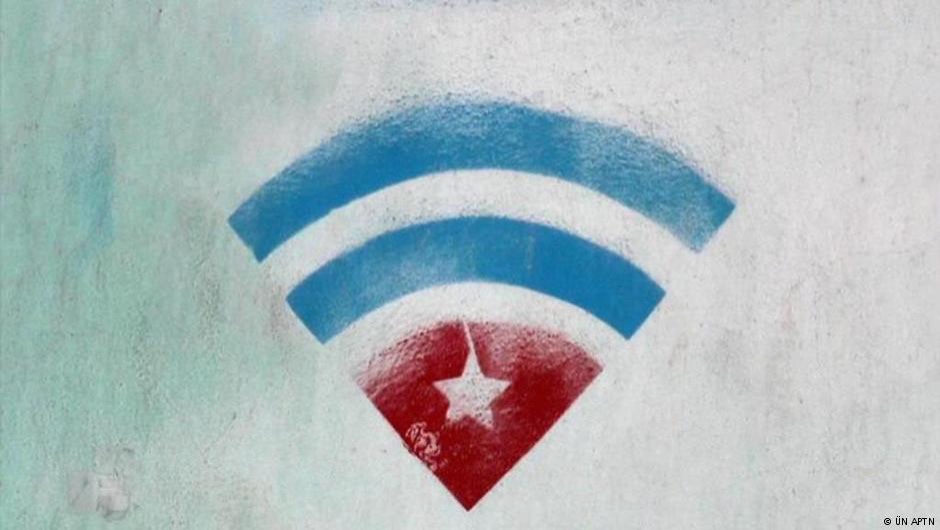Access to information nowadays is very easy. Almost every device in the Western World is able to connect to the internet and even more possibilities open up to access information. Currently, we own more than 3.5 connected devices per person (Buckle, 2016). In our discussions on Internet and the role of information, we often talk about connecting even more devices, trying to find ways in order to improve the integration between devices, enabling these devices to learn from each other or from themselves, with developments around, amongst other things, machine learning and Internet of Things. However, as natural as this may seem for us, there are still plenty of countries in the world for which this is not so natural, and where other ways to connect have to be found. In this blog, I want to elaborate on the example of Cuba.
Since the communist revolution of 1959, the government of Cuba has had strict authority over the information Cubans could access. In 2007, the Communications Minister of Cuba, Ramiro Valdés, warned that “[t]he wild colt of new technologies can and must be controlled”. It seems that, a decade later, this statement still holds. In 2015, only 5 per cent of the country had access to the uncensored internet. In that same year however, the Cuban government opened the first 35 public Wi-Fi hotspots in Cuba. But this did and does not come cheap. In order to access the internet, you have to pay roughly $2 dollar for an hour of internet, after waiting in really long queues that could take up to an hour. If you are at the front of the line, you should hope that the cards still were available, and if that is not the case, you have to buy them illegally on the black market for at least $3. After that you could finally get access to the internet, hoping that the Internet is not overloaded (Harris, 2015a; Muse, 2016).
However, due to all the restrictions, the Cubans have evolved as an innovative people. As a result of this lack of Internet, a different type of internet was built by the Cubans themselves. StreetNet, a bootleg version of the Internet, initially started by connecting computers with long Ethernet cables, running from rooftop to rooftop. After they switched to wireless routers, more people could get connected. A giant network was created that contained no central server. In 2015, in just Havana, more than 10,000 people were connected to this network. This alternative version of the internet also contains social media sites such as Fakebook (don’t mistake this for Facebook), search engines, and online games, and essentially performs the same functions as and looks like our version of the Internet (Harris, 2015b; NOS, 2016).
This also makes it very hard for Cubans to access hit shows such as House of Cards and Game of Thrones, which for us with the help of streaming services such as Hulu and Netflix is done in the blink of an eye. Yet again, Cubans have found a solution for this. Every week, more than a terabyte of data enters the country on external hard drives. This package is known as el paquete semanal (the weekly package) and contains all the latest episodes of hit shows and the newest albums. These packages are smuggled through the country by people known as paqueteros, who provide the package to one individual after another. It has been reported that 3 million Cubans have access to Western music and movies in this way (García Martínez, 2017, Harris, 2015c).
Currently, the country is slightly opening up. Nowadays, Cuba contains approximately 300 Wi-Fi hotspots, which still is not a lot for a country with 11 million people (that is one hotspot per 36000 inhabitants) (NOS, 2017). In comparison, already back in 2008, the Netherlands had 4900 of these hotspots, and that does not include the possibilities to access internet without using Wi-Fi, such as 3G, which is still in its infancy in Cuba (Keswiel, 2008; Hernandez, 2017). Furthermore, more hotels get Wi-Fi access, and some government controlled places offer call-in lines to the internet. Cubans are now able to access more websites, but websites such as Skype are still inaccessible (Matsakis, 2017). However, this internet still is not very fast, and downloading apps takes very long. Luckily, local phone shops provide the answer, by enabling Cubans to connect their phones to a computer in the store. For a certain amount of money Cubans are able to download a few apps. Unfortunately, the app offerings online are not very large, since Cuba still deals with the American embargo. Companies such as Apple and Google are not able to sell their apps in island nation. Cubans were fortunately able to bypass this with VPN connections and credit cards from family members that live abroad, so that app developers cannot localise their actual position (NOS, 2017).
In short, Cuba deals with an interesting perspective on Internet. Even in the face of strong resistance, control, and censor, the Cubans were and are able get access to the Internet. Until all Cubans can access the Internet in the same way as the Western world can, they have to rely on their creativity. Buena suerte Cuba!
References
Buckle, C. (2016). Digital consumers own 3.64 connected devices. GlobalWebIndex. Retrieved 7 October 2017, from http://blog.globalwebindex.net/chart-of-the-day/digital-consumers-own-3-64-connected-devices/
Cubaanse internet bestaat uit ‘Fakebook’ en usb-sticks. (2016). NOS. Retrieved 8 October 2017, from https://nos.nl/nieuwsuur/artikel/2094116-cubaanse-internet-bestaat-uit-fakebook-en-usb-sticks.html
Digitalisering van Cuba versnelt, maar apps laden langzaam. (2017). NOS. Retrieved 7 October 2017, from https://nos.nl/artikel/2156963-digitalisering-van-cuba-versnelt-maar-apps-laden-langzaam.html
García Martínez, A. (2017). Inside Cuba’s DIY Internet Revolution. WIRED. Retrieved 7 October 2017, from https://www.wired.com/2017/07/inside-cubas-diy-internet-revolution/
Harris, J. (2015). Castro hates the internet, so Cubans created their own. Vox. Retrieved 7 October 2017, from https://www.vox.com/2015/10/5/9434407/cuba-internet-explained-castro
Harris, J. (2015). Castro hates the internet, so Cubans created their own. Retrieved from https://www.youtube.com/watch?v=FFPjJM6yYS8
Harris, J. (2015). This is Cuba’s Netflix, Hulu, and Spotify – all without the internet. Retrieved from https://www.youtube.com/watch?v=fTTno8D-b2E
Hernandez, M. (2017). 3G Has Arrived In Havana. Translating Cuba. Retrieved 7 October 2017, from https://translatingcuba.com/3g-has-arrived-in-havana/
Keswiel, M. (2008). ‘Nederland heeft genoeg wifi-hotspots’. Nu. Retrieved 7 October 2017, from https://www.nu.nl/nuzakelijk-overig/2007074/nederland-heeft-genoeg-wifi-hotspots.html
Matsakis, L. (2017). Here Are the 41 Websites You Can’t Access in Cuba. Motherboard. Retrieved 8 October 2017, from https://motherboard.vice.com/en_us/article/zm37xe/aim-dead-aol-instant-messenger-shutting-off-december-15
Muse, M. (2016). How Cubans Are Using Their Country’s First WiFi Hotspots. Vice. Retrieved 7 October 2017, from https://www.vice.com/en_us/article/jmkd9x/photos-of-people-using-the-internet-in-cuba


